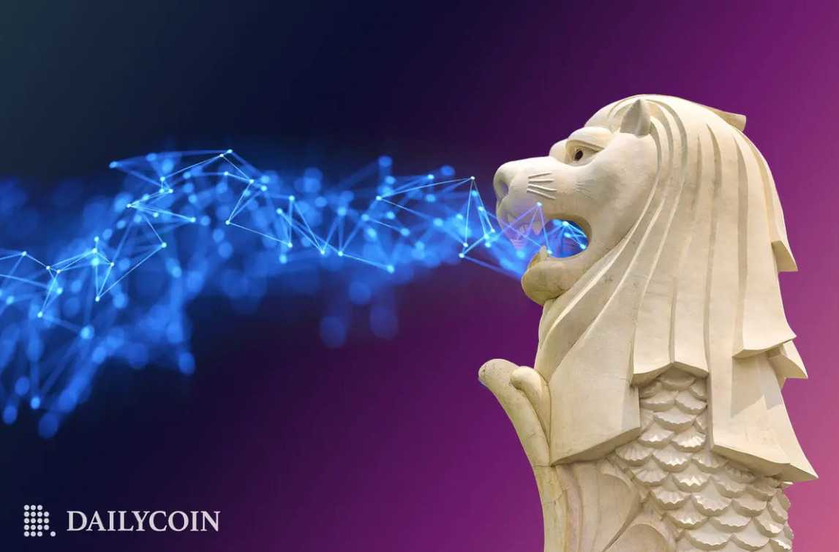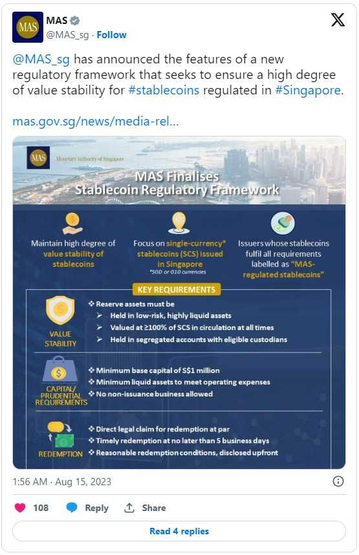- Singapore‘s MAS has unveiled groundbreaking regulations to fortify stability in digital finance.
- Single-currency stablecoins, tied to the Singapore Dollar or G10 fiat, have come under new oversight.
- The intriguing potential of stablecoins as catalysts for innovation has prompted careful monitoring.
With an eye on the future, The Monetary Authority of Singapore (MAS) unveiled an innovative regulatory framework on August 15th to enhance the resilience of the nation’s certified stablecoins.
Singapore to Introduce MAS-regulated Stablecoins
This initiative stands poised to redefine the contours of stablecoin governance, particularly those tethered to the Singapore Dollar and the fiat currencies of esteemed G10 nations.
The purview of these regulations extends specifically to stablecoins in active circulation, surpassing a noteworthy threshold of $5 million. The objective behind this move by Singapore’s central bank is to introduce MAS-regulated stablecoins to enforce stability within the realm of digital finance.
However, it is pertinent to note that before implementing these new regulations, MAS must engage in legislative discussions, seeking authorization from the Parliament.
The underlying belief held by MAS is that stablecoins possess the potential to facilitate innovation as a medium of exchange, provided they are subject to vigilant monitoring to ensure the stability of their value. At present, Singapore boasts only one stablecoin.
Singapore’s Proactive Approach to Cryptocurrency Regulation
Given the ongoing expansion of the cryptocurrency market, governmental interest in overseeing this domain has intensified. This proactive stance is directed at safeguarding legitimate businesses within the space. Notably, analysts are projecting substantial growth within the stablecoin industry by the time 2030 arrives.
Consequently, prominent economists are now turning their attention toward the regulation of stablecoins. Singapore, known for its favorable disposition toward cryptocurrency regulation, has positioned itself as an attractive hub, garnering involvement from various entities.
Noteworthy participants include the International Monetary Fund and JPMorgan, who have contributed to establishing crypto standards within the country. In its endeavor to maintain a controlled environment, MAS stipulates specific mandates for firms creating stablecoins.
On the Flipside
- As stablecoins become subject to more regulations, users might face reduced privacy due to heightened monitoring and reporting requirements.
- These regulatory hurdles could hinder financial inclusion efforts, as newcomers may struggle to comply with the regulatory demands and associated costs.
Why This Matters
As governments worldwide focus on crypto regulation, this proactive move by the Monetary Authority of Singapore sets a precedent for responsible oversight, bolstering confidence in the broader cryptocurrency ecosystem.





























